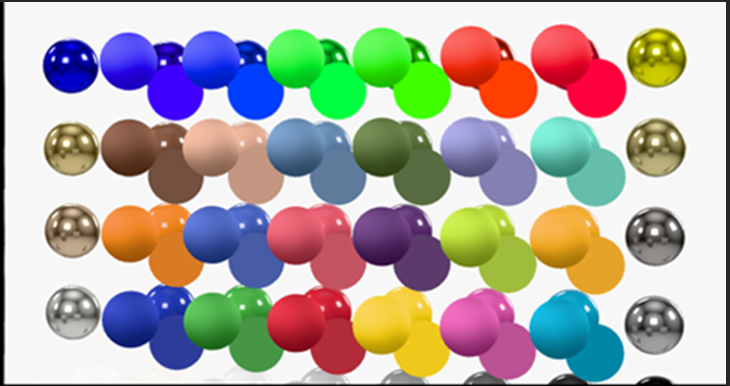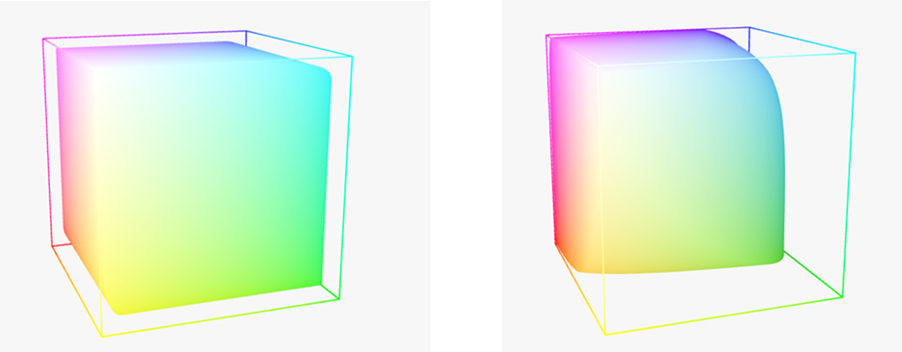The Khronos PBR Neutral Tone Mapper development stemmed from the need to ensure color consistency in e-commerce settings. Existing tone mappers used in filmmaking sometimes restrict access to certain colors, such as bright shades of yellow, green, and cyan, which cannot be accurately rendered on standard sRGB screens. The Khronos PBR Neutral offers artists a new tool to address color inconsistencies, providing a repeatable method to verify color values in texture files and ensuring accurate rendering in the final product.

What do we think? Reliable, repeatable color mapping has always been a problem because there are too many uncontrollable variables in the pipeline, not the least of which is color LUT settings in all the displays involved. Sidestepping that elephant in the room, Khronos has made a major contribution by standardizing the color tone values. Adoption will take some time, and some consumers may never get it, but for those who care what the sofa they may buy really looks like, this will be a godsend.
Khronos maps colors to a fixed standard
Khronos has released its PBR Neutral Tone Mapper specification and sample implementation, a new tool designed to ensure accurate and faithful reproduction of 3D assets rendered using physically-based rendering (PBR). This solution is tailored for applications such as e-commerce, architecture, and CAD, for which true-to-life colors are paramount.
Khronos says the tone mapper has already gained widespread adoption and support from leading 3D tools and engines, including <model-viewer>, Autodesk, Babylon.js, Blender, Dassault, Filament, London Dynamics, Phasmatic, Three.js, and Threekit.
This tone mapper is designed to eliminate HDR artifacts and ensure that a product’s base color, hue, and saturation are accurately reproduced under grayscale lighting. It complements existing tone mappers like ACES, which are geared toward other types of content or artistic stylization.
By implementing the PBR Neutral Tone Mapper, Khronos says artists can trust that their PBR-based renderers will faithfully reproduce the desired colors without the need for complex workflows or tedious manual adjustments. The specification, claims the organization, is remarkably simple to implement, with just 13 lines of OpenGL Shading Language (GLSL) code. It also supports analytical inversion of the tone mapping function.
Initially developed to support glTF 3D asset format workflows, the Khronos PBR Neutral Tone Mapper is file format agnostic, currently supporting output to sRGB, with plans to expand support for additional outputs in future releases. Additionally, Khronos is exploring future glTF exposure controls to enable precise settings of real-world lighting values, which is essential for accurate color display.
Using a conventional postprocessing technique that simulates the way film responds to light by mimicking the tone curve of film in images, filmic tone mappers like ACES pose a challenge when rendering true-to-life assets, particularly due to the restricted range of achievable colors. Bright hues like yellow, green, or cyan may not render accurately on standard sRGB screens, leading to washed-out appearances in 3D objects. Artists commonly avoid using a tone mapper altogether to mitigate this issue, which can enhance saturation but may introduce problems like hue distortion, visual anomalies, or diminished dimensionality, especially for reflective surfaces.

Khronos says its PBR Neutral Tone Mapper is designed to achieve a precise 1:1 color matchup to a specified maximum value, reserving the remaining headroom for compressed highlights. This approach enables content creators to preserve the integrity of base colors, textures, and dimensions.
The accompanying diagram visually compares the reachable colors for Khronos PBR Neutral versus the widely used ACES filmic tone mapper. The cube represents the [0, 1] space in linear light without the application of an sRGB curve. This visualization highlights the unique color preservation capabilities of the Khronos PBR Neutral Tone Mapper.

The Khronos PBR Neutral Tone Mapper gives artists a new option for creating assets tuned to application needs. Khronos PBR Neutral, linear, and filmic tone mapping each have distinct use cases and advantages:
- Linear tone mapping (i.e., “no tone mapper applied”) works well for models with no HDR input or physical lighting.
- Filmic tone mapping (e.g., ACES, AgX) should be used in strongly HDR scenes, applications with wide input color gamuts, or to achieve specific artistic looks.
- Khronos PBR Neutral is designed for photorealistic physically-based rendering with well-exposed scenes, precise sRGB base color reproduction under grayscale lighting, and un-opinionated representation under colored light such as sunlight.
Removing the guesswork from content creation
The Khronos PBR Neutral Tone Mapper makes it possible to verify a 3D object’s base color independently from the lighting environment, an approach that has advantages for artists, brands, and end users. These benefits include:
- Reduced guesswork: Artists can verify color values in the texture file; the “guess and check” process of creating a model and testing color output in the final render is eliminated.
- Shorter QA cycles: The chance of finding color issues in a finished model is reduced, resulting in less rework and fewer delays.
- Faster updates: An object’s colors can be quickly and easily updated in the asset file without extensive additional QA.
- Flexibility: Marketing and graphic design professionals can vary the lighting environment to achieve their desired look without needing to adjust the base model colors to maintain color fidelity.
The development and rapid uptake of the Khronos PBR Neutral Tone Mapper was made possible by the cross-industry collaboration that takes place within the Khronos 3D Formats and 3D Commerce Working Groups. Content creators, artists, implementers, and engine developers are encouraged to share their feedback, questions, and suggestions for future improvement by engaging with the Working Group on GitHub, Discord, Khronos Discussion Forum, Stack Overflow, or X.
Any company can get directly involved in the development of glTF and other Khronos standards by becoming members. Learn more at khronos.org/members.
Khronos has released the Khronos PBR Neutral specification into open source and welcomes community feedback and suggestions for future enhancements via the Khronos PBR Neutral Tone Mapper GitHub repository. Content creators, artists, implementers, and engine developers are encouraged to test the Khronos PBR Neutral sample implementation interactively using their own glTF assets and lighting to determine if it is a good fit for their use case and report feedback and issues on GitHub.
An interactive comparison of various tone mappers, including Khronos PBR Neutral, is available at https://tone-mapping.glitch.me/. The Khronos glTF Sample Viewer also supports Khronos PBR Neutral under Advanced Controls, Tone Map.
Anyone interested in additional information on the background, design goals, and implementation details of Khronos PBR Neutral is encouraged to read the Tone Mapping Considerations for Physically-Based Rendering article by Google staff software engineer Emmett Lalish.
Khronos will also host a free webinar, How to Achieve True-to-Life 3D Color Rendering with the Khronos PBR Neutral Tone Mapper, on Thursday, May 30, 2024, at 10:00 am PT. Register to attend.